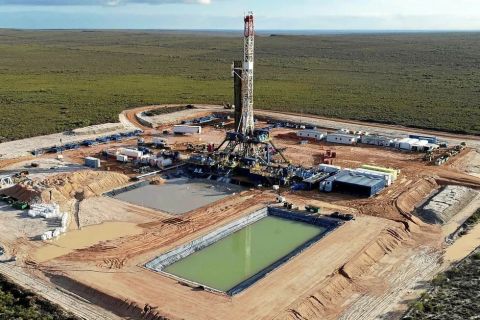?Back in the “good old days” when oil sold for $60 a barrel, companies that were thinking of selling producing oil and gas properties would invariably ask their sales agent, “How much do you think my PUDs are worth?”
Implicit in the question was the seller’s expectation that the “market” would not give much, if any, value for probable and possible reserves. However, in today’s A&D market, some sellers who consider themselves “sophisticated” expect buyers to pay more than proved-reserves value where 3P (proved, probable and possible) reserves potential has been identified in sales materials.
Several years ago, a trend developed in which some public oil and gas companies not only reported total proved reserves, but also probable and possible reserves potential in press releases when announcing an acquisition.
Even the SEC announced in June 2008 that it has proposed revisions in E&P-company reporting requirements to “help provide investors with a more accurate and useful picture of the oil and gas reserves that a company holds” by enabling companies to formally disclose their probable and possible reserves in public filings to investors. Current rules limit disclosures to proved reserves.
Even though some buyers of oil and gas asset packages are eager to tout 3P reserves potential in press releases, or the fact that the SEC is proposing to allow disclosure of probable and possible reserves to investors, doesn’t necessarily make these non-proved reserves less risky (i.e., more valuable) from a reservoir engineering standpoint. Despite this, sellers now want to know how much the “market” will pay for all their reserves, including the probable and possible.
While a quantitative assessment of 3P reserves’ value prior to sale can only be made after a rigorous analysis of an asset package’s technical and nontechnical attributes, sellers and buyers may use the “R/P Valuation Tool,” which has been developed by Energy Spectrum Advisors, to get a qualitative sense of the potential market value of assets with 3P reserves potential.
To illustrate the tool’s usefulness in assessing the market value of deals with significant upside potential, the firm examined four ArkLaTex-area transactions with undeveloped reserves potential in a number of reservoirs, including the Fayetteville and Bossier/Haynesville shales. Petrohawk Energy Corp. was the buyer in three of the highlighted deals and Exco Resources Inc. was the buyer of an East Texas deal announced in July 2008.
Substantial premiums appeared to have been paid for undeveloped Fayetteville shale reserves in two of the three Petrohawk deals as illustrated in the large price multiples paid per thousand cubic feet of daily production, relative to other deals with similar proved reserves-to-production (R/P) values. By comparison, Petrohawk’s $169-million purchase in December 2007 of additional interests in Elm Grove Field appears to give minimal value, as reflected in the relatively low price-per-flowing-barrel multiple, given the asset’s R/P value and considering upside in the Hosston, Lower Cotton Valley and Haynesville reservoirs.
Exco’s $252-million purchase of producing gas properties in East Texas touted substantial probable and possible reserves. However, the price-per-flowing-barrel multiple does not appear to indicate that a premium was paid as it is similar to multiples paid for deals with nominal, if any, potential for probable and possible reserves.
It goes without saying that many factors affect what the market will pay for a specific package of proved and nonproved reserves. Some deals command anomalous premiums depending on whether or not they happen to be in the latest “land rush” area while others with “significant” 3P potential might not trade for multiples that some sellers expect or at least hope for.
In this age of greater reserves disclosure, we believe empirical transaction data suggest current production volumes, proved reserves and an asset’s proved R/P remain key factors in determining how producing properties are valued in today’s sophisticated market.
—Charles M. Lapeyre,Energy Spectrum Advisors Inc.(energyspectrum.com/advisors)
Recommended Reading
Triangle Energy, JV Set to Drill in North Perth Basin
2024-04-18 - The Booth-1 prospect is planned to be the first well in the joint venture’s —Triangle Energy, Strike Energy and New Zealand Oil and Gas — upcoming drilling campaign.
EIG’s MidOcean Closes Purchase of 20% Stake in Peru LNG
2024-04-23 - MidOcean Energy’s deal for SK Earthon’s Peru LNG follows a March deal to purchase Tokyo Gas’ LNG interests in Australia.
Crescent Point Divests Non-core Saskatchewan Assets to Saturn Oil & Gas
2024-05-07 - Crescent Point Energy is divesting non-core assets to boost its portfolio for long-term sustainability and repay debt.
Permian Resources Adds More Delaware Basin Acreage
2024-05-07 - Permian Resources also reported its integration of Earthstone Energy’s assets is ahead of schedule and raised expected annual synergies from the deal.
Evolution Petroleum Sees Production Uplift from SCOOP/STACK Deals
2024-05-07 - Evolution Petroleum said the company added 300 gross undeveloped locations and more than a dozen DUCs.





